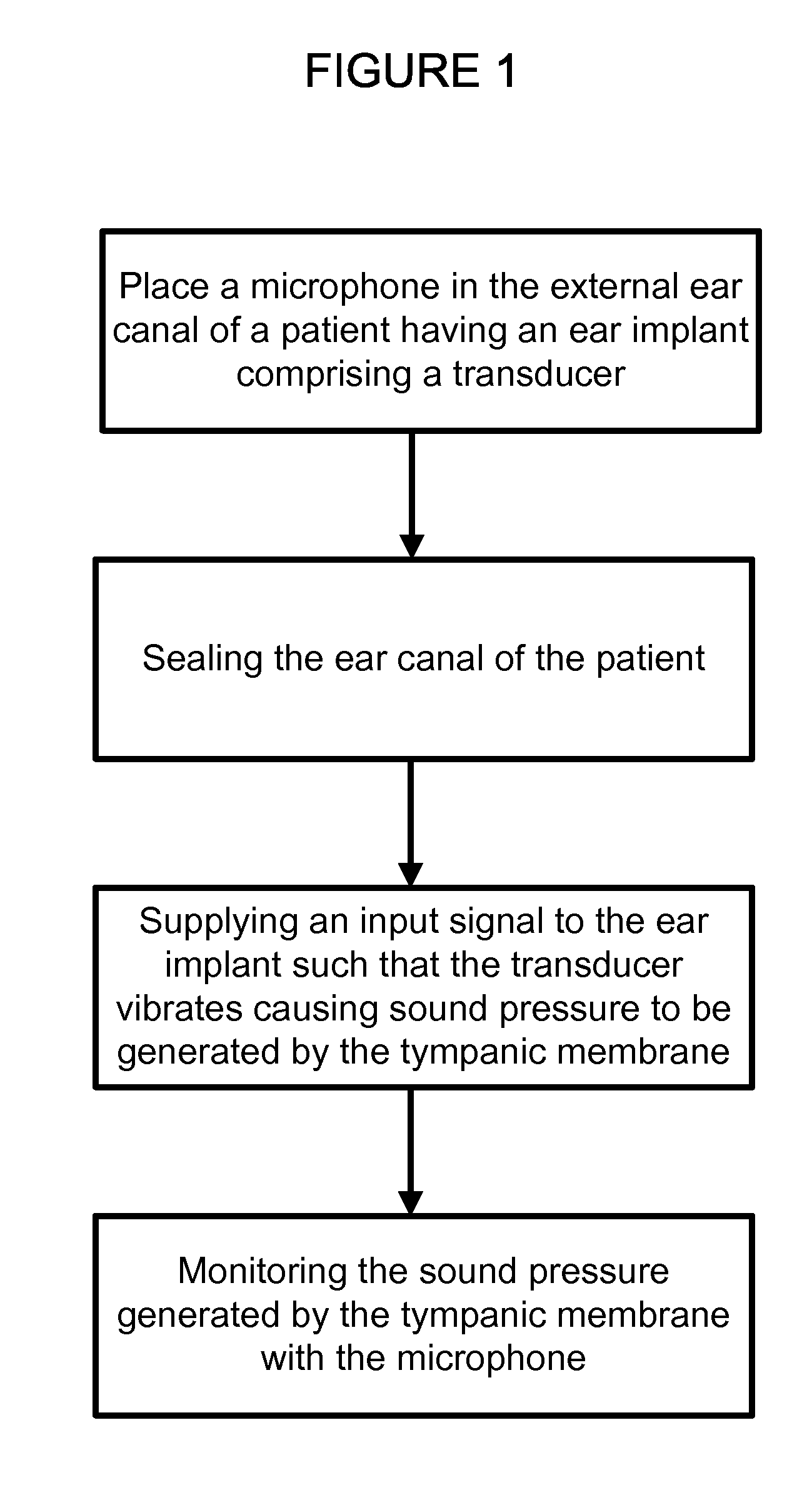Soundbridge test system
a test system and soundbridge technology, applied in the field of hearing device testing, can solve the problems of sensorineural hearing loss, hearing impairment, hearing impairment, etc., and achieve the effect of improving the testing of hearing devices
- Summary
- Abstract
- Description
- Claims
- Application Information
AI Technical Summary
Benefits of technology
Problems solved by technology
Method used
Image
Examples
example 1
Microphone Probe Development
[0071]In these experiments, probe microphones were assessed for their ability to transmit sounds in various embodiments of the present invention. It was determined that although several commercial probe microphone measurement systems are available (e.g., from Frye Electronics and AudioScan), modifications of the output stages of these systems were necessary in order to achieve accurate signal delivery. For example, the output stage of a Frye Electronics FP-40 microphone was successfully modified, such that it was possible to record the output generated by an FMT™ with a probe microphone. In addition to the commercially available probe microphones, Mueller et al., provide a review and analysis of various probe microphone measurements for hearing aid selection and assessment (See, Mueller et al., Probe Microphone Measurements: Hearing Aid Selection and Assessment, Singular Publishing Group, Inc., San Diego [1992], herein incorporated be reference).
[0072]In ...
example 2
Positioning of the Probe Microphone
[0077]In these experiments, the effect of varying the positions of the probe microphone during testing was investigated using temporal bones. In these experiments, a foam ear plug was inserted into the ear canal and a transducer (01599) was positioned at various distances from the plug near the hub of the syringe. The probe microphone was placed at the opposite end of the plug (i.e., near the large, open end of the syringe), at approximately 2 mm, 4 mm, and 6 mm in fresh human temporal bone. The plug was used as in these experiments to seal the test system from ambient room noise. At the conclusion of these experiments, the transducer was removed and replace, and the measurements repeated several times.
[0078]The results of these experiments indicated that the depth of the probe microphone was not a critical factor in obtaining reliable measurements from fresh human temporal bone. However, measurements taken at 18 mm when the yellow foam ear plug no...
PUM
 Login to View More
Login to View More Abstract
Description
Claims
Application Information
 Login to View More
Login to View More - R&D
- Intellectual Property
- Life Sciences
- Materials
- Tech Scout
- Unparalleled Data Quality
- Higher Quality Content
- 60% Fewer Hallucinations
Browse by: Latest US Patents, China's latest patents, Technical Efficacy Thesaurus, Application Domain, Technology Topic, Popular Technical Reports.
© 2025 PatSnap. All rights reserved.Legal|Privacy policy|Modern Slavery Act Transparency Statement|Sitemap|About US| Contact US: help@patsnap.com


